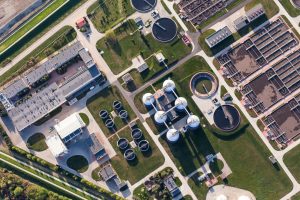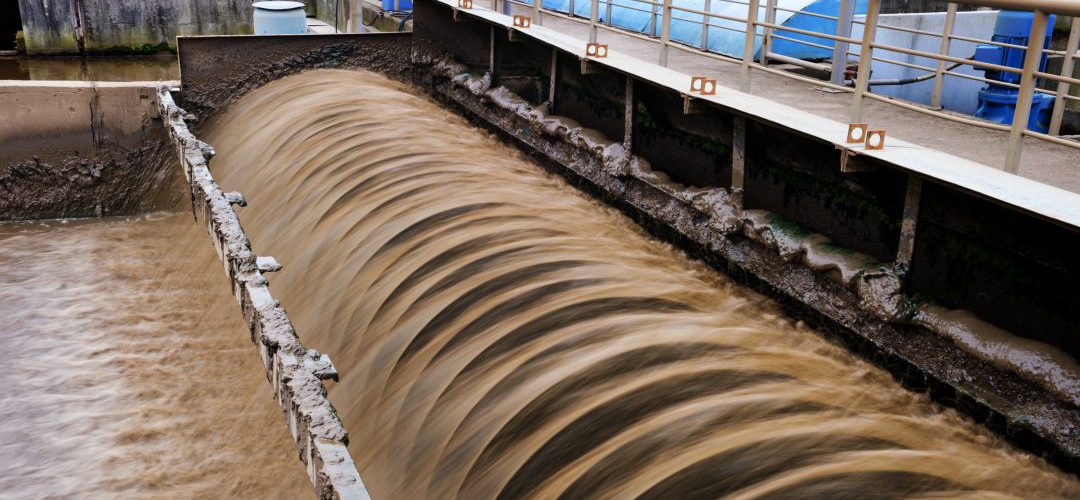Modern Challenges to Wastewater Treatment
Chemistry matters on the path to efficient, low-risk, earth-friendly and cost-effective wastewater management. In the modern world of wastewater treatment, plant professionals face increasing pressure to do more with less. Regulators and customers want to see plants improve their performance, reduce environmental impacts, meet ever-tighter discharge standards, and maintain high health and safety levels. They also want all of this without increased costs to the public and without new and expensive capital improvements to existing infrastructure.

The growing complexity of challenges faced by today’s wastewater treatment plant operators is daunting. It also underscores a common reality shared by all wastewater treatment plant professionals: chemistry matters.
Because the public demands a cleaner environment and greater protection of clean water resources, today’s treatment plant operators are increasingly seeking earth-friendly solutions that can help achieve multiple goals without expensive capital upgrades. To compound the problem, each country in the world utilizes a variety of physical, chemical, and environmental methods to address the job of treating their nation’s wastewater. Treatment facilities range from brand new to near-ancient and in size from small local plants to monolithic networks serving mega-cities. The United States alone has approximately 22,000 wastewater management facilities that each require their own unique approaches to water treatment. Regardless of the age, size, or complexity of the wastewater treatment facility, Neo uniquely leverages rare earth chemistry to address the challenges of wastewater management, while being friendly to existing plant infrastructure.
Leveraging the Power of Rare Earth in Wastewater Treatment
“If it isn’t broken, don’t fix it,” the old saying goes. Over the years, iron- and aluminum-based products were able to treat wastewater to sufficient standards and did so at relatively low cost. That has been the tried-and-true approach for decades for most wastewater treatment plants. But, as many plants have seen, these chemicals often create unintended consequences. Costs can build up over time as expensive plant infrastructure corrodes. Undesirable levels of unwanted chemicals build up as well, which then require additional treatment and raise costs. Large volumes of sludge and other wastes created by these legacy chemicals drive costs even higher, as well as create additional negative environmental impacts. In many unintended ways, the old ways are in fact broken.
In sharp contrast, Neo Water Treatment’s Neo WaterFX300 (formerly RE300) product stands out as a unique, cost-effective, and earth-friendly solution that leverages the power of abundant rare earth elements.
Neo Water Treatment’s parent company, Neo Performance Materials, has been leveraging the power of rare earth elements to solve complex challenges across multiple industries since 1982. The unique characteristics of products derived from rare earth ingredients enable them to create unprecedented solutions and solve existing problems in ways that are not possible with traditional approaches.

Rare Earth that is not so Rare
The term “rare earth” is an inaccurate name for the 17 chemical elements in this category because these elements are found in abundance in the earth’s crust. The rare earth elements predominantly used in Neo’s wastewater treatment product line are cerium and lanthanum. Far from being rare, cerium is the 26th most abundant element in the Earth’s crust, while lanthanum is the 29th most abundant. Both are more abundant than nitrogen, cobalt, and lithium. Both are produced by hundreds of companies around the globe. Neo Performance Materials has done the work of finding and sourcing these elements in ways that make their availability unlimited in solving problems such as the management of our planet’s wastewater.
As the primary active ingredients in RE300, cerium and lanthanum are perfectly tuned to solving some of the most difficult wastewater treatment challenges. Both have a very high affinity for dissolved phosphorus. When they combine, they form a very strong and stable bond and create a solid mineral that settles to the bottom of the liquid solution. The higher atomic weights of cerium and lanthanum, as compared to iron or aluminum, also contribute to highly efficient settling. Because of how efficiently they react with phosphorus, cerium and lanthanum also create lower volumes of precipitated solids when compared to ferric and aluminum products. Field applications have shown that Neo WaterFX300 (formerly RE300) results in a significant reduction in sludge volumes. Leveraging the earth’s rare earth chemistry solves an old problem in new and more efficient ways.
One Wastewater Treatment Product … Eight Key Benefits
What makes Neo’s Neo WaterFX300 (formerly RE300) product such a powerful solution for wastewater management is that it goes far beyond just the management of phosphorus levels. There are at least eight key cost-saving, efficiency-creating and risk-reduction benefits that result from utilizing Neo Water Treatment’s Neo WaterFX300 (formerly RE300) applications:
- Phosphorous reduction – far more efficient than conventional products
- Sludge reduction – substantial cost savings through reduced removal time and effort
- Reduced polymer requirements
- Less pH upset
- Reduction in algae blooms
- Enhanced dewatering
- Minimal infrastructure disruption
- Friendly to treatment plant infrastructure materials
 Plant managers and operators deploying Neo WaterFX300 (formerly RE300) find that transition time, cost and effort remain low throughout deployment. Money, time and effort are saved because Neo WaterFX300 (formerly RE300) requires little or no physical changes to existing plant infrastructure. Efficiencies are realized quickly because the action of Neo WaterFX300 (formerly RE300) is far more efficient than older technology systems and/or the use of traditional chemicals. Neo’s leverage of innovative chemistry proves that “tried and true” is not always the best approach. Increasingly complex industry requirements, the dynamic needs of treatment facilities, and the high costs and risks of traditional solutions all point to the need for a new approach. Innovative chemistry and the seamless application of Neo WaterFX300 (formerly RE300) is the answer that wastewater treatment plants need in this dynamic and challenging age.
Plant managers and operators deploying Neo WaterFX300 (formerly RE300) find that transition time, cost and effort remain low throughout deployment. Money, time and effort are saved because Neo WaterFX300 (formerly RE300) requires little or no physical changes to existing plant infrastructure. Efficiencies are realized quickly because the action of Neo WaterFX300 (formerly RE300) is far more efficient than older technology systems and/or the use of traditional chemicals. Neo’s leverage of innovative chemistry proves that “tried and true” is not always the best approach. Increasingly complex industry requirements, the dynamic needs of treatment facilities, and the high costs and risks of traditional solutions all point to the need for a new approach. Innovative chemistry and the seamless application of Neo WaterFX300 (formerly RE300) is the answer that wastewater treatment plants need in this dynamic and challenging age.



